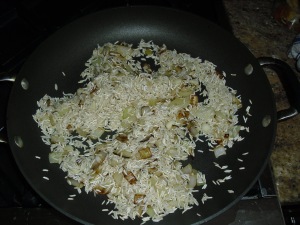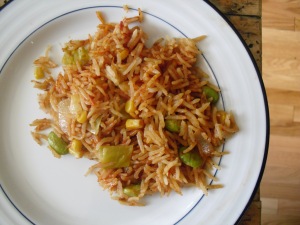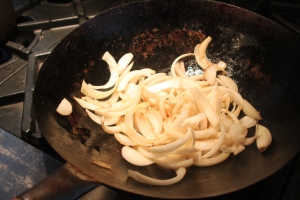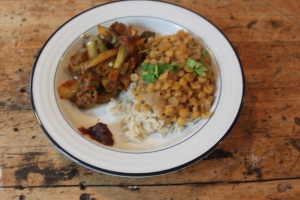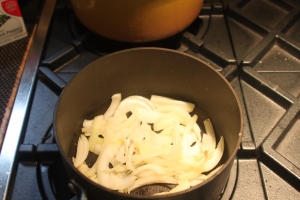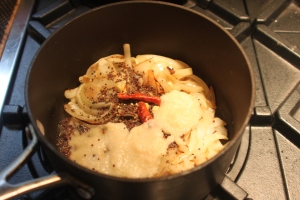What Happens to a Dream Deferred? My time at the Million Second Quiz
 On Thursday I competed in the Million Second Quiz, a game show on NBC. I have been a pub trivia player and host for a long time, and thought this would be exciting and fun. While in DC one weekend I auditioned for the show and was picked to compete in New York.
On Thursday I competed in the Million Second Quiz, a game show on NBC. I have been a pub trivia player and host for a long time, and thought this would be exciting and fun. While in DC one weekend I auditioned for the show and was picked to compete in New York.
Many have asked me about my experience. It is such a boring and depressing tale that it kills me a little bit each time I tell it. So I have written it down.
Wednesday 10:00 am
While at work I receive a call from an MSQ producer telling me to come and participate. I am told to be at the Times Square studio at 10am on Thursday.
Giddy with excitement I ask my supervisor if I can have the time off. Foolishly I think I will be gone for the day, or as a new resident of Winners Row, on my way to being a millionaire.
Even though we are in the midst of a big project at work, my plea was convincing enough (as well as my assurance to work weekends to make up the time). So happily, I went home to prepare.
Wednesday 8:00pm
I went over strategy, chose an outfit, and began to panic about all the things I did not know: the British monarchy, American football, and country music in general I memorized the name of the royal baby and the Monday night football lineup.
Thursday 6:30 am
My nerves woke me up early. I styled my hair and had Mark veto wearing leggings as pants.
Thursday 9:58 am
Get a call from a producer asking if I could come back at 6pm to try out. I am already a block away from the studio, and am missing work. She assents to let me come in.
Thursday 10:00 am
Arrive at the “studio”. Its not really in Times Square, its more near the river where the inter-city busses park. Almost get run over, walk through a flock of pigeons to get there. Thankfully I am not pooped on.
At the studio I go through a metal detector, and have my ID checked and picture taken. An ID bracelet with a bar code is put on our wrist, like at the hospital. I am then ushered into a room where I am handed a packet of legal paperwork.
After we are done, the 75 of us wait to have our packet checked by a single person. This process is time consuming, but we are all still excited and people are chatting with one another about where they are from, what they do, etc.
Thursday 12:00 pm
50 of us are ushered into a room to watch an instructional video telling us about our legal rights as related to this quiz show. Game rules are further explained. The video lasts approximately 30 min.
People are starting to get hungry. Some ask about a vending machine. This request is denied. We are given bottles of water and complimentary bags of Orville Redenbacher brand popcorn.
We were told that things were backed up due to rain. Apparently NBC had not planned on rain occurring at all, and some of the contestant areas were outside.
Thursday 2:30pm
We are taken into what the contestants call “the Subway Lounge” (SL). Part of the SL is on a live feed so that people online can watch you whilst you stare at a laptop and cram a footlong sub down your gullet. We are happy to go to the SL because there is food there.
We have our bracelets scanned as we enter the SL. The purpose of the SL (and the game) is to take 100 people who are cleared, have them compete against each other, and then choose 8 of them every 2 hours, to compete on the non-primetime portion of the show.
– the game is won by sitting in the money chair
– the game is being played 24 hours a day for all million seconds (approx.. 10 days)
– when the game is not on prime time (1 hour per day) its being played in the studio, with one bout lasting 500 seconds or approx.. 10 min.
– If you think these rules are super confusing you are not alone: A Simple Guide to Understanding the Million Second Quiz
Contestants could stay in the SL and take the qualifying quiz every two hours for up to 10 hours. They were then welcome to come back the next day, and the next day, until the end of the show.
This is where I met some truly depressing people. One man who lived 4 hours away took a bus and a train to compete. He was forced to leave yesterday after being in the SL for ten hours. He went to a 24 hour diner and sat there until it was time to come back. Another man slept in an alley. People had come from far and wide.
I wanted to tell these poor souls to go home, that it wasn’t worth it. The odds of winning anything at MSQ are so low. The only people who win anything are the 4 people in winners row and the person physically in the money chair when the game ends. Additionally, they could never move up from the SL and just stay there forever in sandwich purgatory.
I vow to myself that if I am not chosen in the upcoming round, I will go home and still have a couple of hours to do work and make a dinner reservation with Mark.
Let me also note that at this point, we are all really hungry. The only food in the SL is more branded popcorn, twinkies, energy drinks called “Just Chill” (?), sodas, Subway brand coffee, and a Subway sandwich station where two nice Indian ladies would make your sub for you. While the subs were free (and the avocado upgrade), the toppings were limited (no hot peppers or buffalo sauce b/c contestants could get heartburn).
The room reeked of Subway and all drinks, including water, had to be in a Subway branded cup. We each sat at a computer station and could either surf the internet or play the app version of the quiz game. I did the latter.
Thursday 4:30pm
The quiz is administered. It is a paper quiz with 17 multiple-choice questions. NBC is not smart enough to use scantron so we are told these quizzes will be scored by hand.
The quiz asks questions like “What was the average cost of a wedding dress in the US last year” and “What is the 9th word of ‘the Star Spangled Banner’ and “the Straits of Gibralter connects the Atlantic Ocean to what body of water”. So its entertaining, but short, and it makes me feel like I’m taking my SAT again.
Thursday 5:30 pm
A producer comes in and reads names. If your name is read you have to get pumped up , jump around, and get super excited. People are tired so they have to do each person a couple of times. He reads through 7 names and the 8th name is me!
I jump for joy and am immediately forced to surrender my iPad and phone to a production assistant (PA).
Thursday 6:00 pm
We are taken to a tent outside where we are told of the next steps. Three things must happen:
- a psychiatric evaluation – we have to be stable enough so that if we lose we don’t go ballistic on live tv.
- A medical evaluation – we have to be strong enough to live with sleep deprivation and not get a heart attack
- Another “story” video where we share personal facts about ourselves.
These things don’t happen. Instead a storm happens, the tent nearly blows down, and we walk through the pouring rain to be moved back inside.
Thursday 7:30 pm
We are in the waiting room. There are around 35 of us. We are told how lucky we are to make it to this stage and that all of us will now have a chance to play. We settle in and wait to be called for evaluations. Blankets are distributed. I feel like I am at a slumber party with total strangers.
There are no electronic devices in the room so people are forced to talk to one another. I meet some interesting people including:
– a man who says he is an Ancient Egyptian Priest and who carries a giant silver ankh
– a woman who is the slot machine manger for a casino in PA. She gives us tips on the slots and tells us we should never drop anything on the casino floor
– a writer who writes children’s books under one pseudonym and romance novels under another pseudonym
We have to ask PA’s to give us bathroom breaks. The bathrooms are a cluster of port-a-potties indoors that get progressively dirtier throughout the day. There is no running water.
This room is where the real waiting game begins. Smokers start to flip out, people talk really loud so nobody can sleep. A few, battered magazines are passed around. It’s a creepy, cold, waiting room where some talk strategy, others crack jokes, and I just try to stay awake.
Every two hours, a handful of people are called up to go play the game. People also begin to leave. People with kids or pets, and those who don’t want to be stranded in Manhattan at 2am, go up to the producers and disqualify themselves from the game so they can leave.
It is here that I realize that I don’t know where I live. Today was moving day. Poor Mark had to move on his own. I don’t have our new address or a key. A producer calls Mark and assures me he is awake and will text me the address when I finish.
Thursday 11:30pm
Time for my psych evaluation. I get ushered into a room and asked a few questions about my mental stability. I pass. Back to the waiting room.
Friday 12:30am
Medical evaluation consists of 5 minutes where my temperature and blood pressure is taken. I pass. Back to the waiting room.
Friday 1:30 am
After a mere 6 hours of waiting, I am called to the next area, the room where they prep people before going on set. At this point, I look and feel terrible. All I’ve eaten is a couple of subs and I’ve been fueling myself with energy drinks and water. I am warned that if I drink more than 2 energy drinks my heart will start to feel funny so I stop.
In this waiting room are the people who will be my competitors. I will go head to head against one of them. At this point, I know most of them. The game seems a distant memory. All can think about is getting home, wherever that may be.
Friday 2:15 am
Story time. I’m taken into a trailer and told to get “pumped up” its really hard to do it. I have to show the camera as much energy as possible. I’m so tired at this point that I start rambling when answering the questions. When asked how I would spend the money I say I would start a cat café and commission an architect to build a giant geodesic dome for me to live in. It all makes no sense.
Friday 3:15 am
It’s my time to compete. A microphone is put on me and I’m told to smooth down my hair. I walk onto the set and see a man who was in the room with me. He is nice and he also looks tired.
We play the game. I lose by one point. The question was about a baseball player in the 1920s. I find out the man I played against is a 5-time Jeopardy winner so I don’t feel bad. I’m relived just to go home.
Friday 3:30 am
I take the mike off. A producer asks me if I want to come back tomorrow. I say no. They give me my phone back and show me the door. I’m in a part of Manhattan where there are mainly warehouses and there is nobody on the street. I manage to find a cab and get to my new apartment. I dig through a box, find some clean clothes, and collapse into bed.
Conclusions:
So will I try out for another game show again? The answer is yes, but I think I will stick to established shows that have an easy to understand process. I will only try out for a show where I can retain a small amount of my human dignity. I would be fine with living on an island or in a house with cameras, or jumping through a hole in the wall. People try out for game shows because they are interesting and you can be rewarded for an obscure skill. Yet waiting for 17 hours for 10 min of game play is just not worth it. My heart goes out to all those attempting this game and this show.
Here is someone from Slate who has a better written account of his ordeal: 12 Miserable Hours and No Money
For the Love of Whales: Whale Offsets in Japan
 It is hard to point to a time where my obsession with whales began. Perhaps it was Voyage of the Mimi at school or seeing a Beluga whale in an aquarium. Since I can remember, whales have really inspired me. I love whales so much I was engaged under a replica of a Wright whale in the Museum of Natural History. I used my wedding to raise money for the anti-whaling organization, Sea Shepherd. For a long time I vowed never to support countries that supported whaling, specifically Norway and Japan.
It is hard to point to a time where my obsession with whales began. Perhaps it was Voyage of the Mimi at school or seeing a Beluga whale in an aquarium. Since I can remember, whales have really inspired me. I love whales so much I was engaged under a replica of a Wright whale in the Museum of Natural History. I used my wedding to raise money for the anti-whaling organization, Sea Shepherd. For a long time I vowed never to support countries that supported whaling, specifically Norway and Japan.
I leave for a trip to Japan tomorrow and am wracked with guilt that by going on a vacation to Japan, I am implicitly supporting a country and a government that supports whaling. I’ve been interested in many aspects of Japanese culture since college and don’t want to deny myself the countless other awesome aspects of Japanese culture that have absolutely nothing to do with whaling. There have been a number of articles, such as this one in the Japan Times, that discuss the racist undertones in anti-whaling rhetoric in which the Japanese are portrayed as ignorant and immoral. I don’t know how much of this is true and how much are claims propagated by the pro-whaling lobby, but they are troubling nonetheless.
As an adult I realize that it is silly for me to boycott a country I really want to visit just because I don’t like one practice. Yet, I just can’t throw my values out the window. I decided that my best option would be to pay a whale offset. Carbon offsets already exist in order to compensate for unavoidable emissions such as through air travel. Why not whale offsets to compensate for trips to Japan or Norway? All I have to do is to calculate the monetary value of the offset and determine where the money could best be utilized to help whales.
There are a number of ways that an offset could be calculated. One way is to take the amount of money earned by the whale meat sale (around 50 million dollars) and divide it by the number of tourists who visit Japan each year (6.2 million). 50 / 6.2 = $8. So each visitor to Japan would need to pay an $8 whale offset.
Another way would be to factor in the subsidy that the Japanese government provides for whale meat. The industry is highly protected so we could estimate the effects of the subsidy by doubling the cost of the whale meat to 100 million dollars. This would bring up the whale offset to $16 per person. To be safe, I set aside $50 for a whale offset.
How to use the offset is the final component. I wanted to pay the offset directly to an organization. My first choice would have been to donate the money to an organization working inside Japan to change the Japanese government’s stance on whaling. English language internet searches didn’t provide me with much information. When I looked at organizations working to save whales from Japanese whalers, the Sea Shepherds remained the group that most appealed to me. While their tactics are seen as controversial, I have no doubt that they are effective in saving the lives of whales and making things difficult for whalers.
It may seem silly to put so much thought into the lives of whales when I am going on a short vacation and am unlikely to do anything whale related. I know that I am not changing Japanese policy. Still, making a small contribution enables me to do something good and allowing me to enjoy my vacation to Japan while not compromising my values.
Summer Squash Saute
I really like the texture and the subtle flavor of summer squash. It stays pretty firm when you cook it so it can have a nice fleshy taste. It is also everywhere in farmers markets for quite cheap so its great if you want to throw some on the grill or keep some on hand for a simple side dish. This dish really keeps things simple and lets the squash flavors come through.
 Ingredients: olive oil
Ingredients: olive oil
1 medium onion, sliced
2 cloves chopped garlic
1 lb sliced summer squash (I used one large zuchinni and two small yellow squash)
1/4 cup pine nuts
salt and pepper
Step 1: Place a large skillet on medium heat and add a tablespoon of olive oil. Add the onions and cook until golden. Remove the onions from the pan and set aside.
Step 2: Add the squash to the pan and cook, stirring for around 2 minutes or until the squash has softened.
Step 3: Add the garlic to the pan for another minute. Make sure the squash is cooked on both sides. Add salt and pepper to taste.
Step 4: Toast the pine nuts and use them to top the dish.
Serve as a side dish. For a heartier meal, serve over brown rice.
Rethinking our Love of Pork
With the recent opening of The Pig, a snout to tail restaurant in Logan Circle, and the nationwide launch of the Burger King Bacon Sundae last Thursday, the pork renaissance remains hot, with our cultural obsession peaking ever higher. Companies like the the Baconery add bacon to a range of baked goods including cookies, chocolates, and doughnuts. It is easy to find websites like Think Geek selling bacon-scented cologne, bacon-flavored gum, and bacon-infused soap, targeting a bizarre intersection of tech-savvy nerds and meat-loving bros. I’ve never been one to prevent others from eating what they want, but do we really need to go hog wild?
There are a number of factors that have led to pork worship. In the past decade, the rise of meat-based diets such as the Atkins diet and the Paelo-diet encouraged throwing out the conventional diet wisdom of calorie reduction and urged followers to cut carbs and focus on consuming large quantities of meat. These diets tapped into a simmering backlash against vegetarians. I recall a Paelo-dieter at my workplace telling me “steak and eggs, every morning for breakfast, its so awesome.” Indeed, it often felt like these diets were more culturally focused on masculine resentment than they were on nutritional soundness.
In contrast, the healthy food movement towards local, sustainable food was also growing during this time period.. Michelle Obama’s “Lets Move” campaign emphasized eating fruits and veggies. The precursor to all of these recent movements, vegetarianism and veganism, encouraged a diet free of meat. Vegetarianism is on the cultural wane, as more and more young people are turning to what is currently “hip” – an omnivoric diet loosely modelled off that proposed by Michael Pollen. Yet there’s something off.
While people claim to be omnivores, in a very real way the rise of pork is a reaction to vegetarianism and healthy living generally. When you go to a restaurant and order bacon – even locally-sourced, humanly-raised, foodie-approved bacon – you are thumbing your nose at healthy eating and giving in to something decadent that you know is unhealthy. Pork is bad which is part of the reason why, to fans, it tastes so good.
And this is not to say we should never give into to our cravings or listen to our bodies and do things that make us feel good. Extreme dieting and drastic changes to consumption rarely work for most people. Allowing ourselves a treat doesn’t “break” our eating habits.
But if pork is a guilty pleasure, why is it everywhere and in such quantities? At a recent dinner at Pearl Dive Oyster Palace, a seafood restaurant, my partner and I determined that around half of the entrees have pork or bacon in them. There once was a time when restaurants needed to have multiple vegetarian or pescetarian options to serve the needs of its crowd. Now even seafood restaurants are loading up on pork.
What is particularly troubling is the worship of pork by the foodie/locavore scene. People who claim to care deeply about food and its sourcing have no problem avidly consuming pork and especially bacon. Celebrity food advocates like Michael Pollan and Joel Salatin are used by foodies to defend their personal meat consumption and justify the pork craze. Yet I’ve never found these lofty justifications to match actual practice.
First, it is rare to find the person who only consumes snout-to-tail, sustainably farmed pork. I certainly don’t know of any amongst my peers, although I certainly know people who have lied to themselves about it. 99% of pork in this country is factory farmed under very inhumane, environmentally terrible practices and it is pretty difficult to avoid unsustainable pork. Even Michael Pollan eats factory farmed meat. It is nearly impossible to avoid.
Just as everyone thinks they’re an above-average driver, people think they are more responsible than most when it comes to these things – statistically they’re wrong. Not only that, many restaurants and corporations are active participants in greenwashing, a practice where they are less than honest about the eco-friendliness of their products. Yet I’ve never found any bacon-loving foodie who actually wants to interrogate these problems. There’s already strong backlash to ethical sourcing, as seen in a famed Portlandia sketch.
To be fair, the Pig appears to have sustainable sourcing and uses all parts of the animal, so it’s hard to fault them. There is no reason why pork can’t be a sometimes food if farmed sustainably. Hog to tail restaurants are a good start, as the whole pig is used, not just the bacon. But such restaurants shouldn’t be used by liberals to justify their food choices. I made a choice a long time ago to forego all meat except for the occasional fish because I didn’t want to take part in the factory farming system. It would be great if all meat lovers ate at places like the Pig for their meat consumption. But that isn’t how things work. My personal beliefs mesh with Jonathan Safran Foer, author of “Eating Animals” who stated in an interview “I would like to do what I believe in and I would find it very difficult to do that by eating meat. There is no alternative to some flying but it is simple not to eat meat. There is nothing necessary about it.”
The ethos of pork today often wants it both ways. On one hand I hear: Lighten up and enjoy yourself – you know you like it. On the other I hear: We should follow sustainable, humane consumption practices and pork can be part of that process. The guilty-pleasure center of our brain seems to be winning out and merely using the ethical-morality center as cover. When our values serve merely as post-hoc justification for our behavior, it’s time to question both.
Tomato-Veggie Rice
So I definitely make this dish when I am too lazy to go and buy groceries because I usually have the ingredients on hand. Its great for weeknight suppers or for healthy, filling lunches.
 Ingredients:
Ingredients:
olive oil
1 can pureed tomatoes
1/2 -1 cup veggies (you can use a combination of fresh and frozen, I used frozen edamame, canned corn, and cabbage)
2 cloves micced garlic
1/2 medium onion
1.5 cups basmati rice
1 3/4 cup vegtable stock
Step 1: Put 2 tbs oil in a large skillet on medium heat. When the oil is hot, add the onion and cook until the onion softens (3-5 min).
Step 2: Add the rice and cook the rice in the oil until the rice is starting to brown slightly.
Step 3: Add the stock, 1 cup of tomato puree, and vegetables, add salt and pepper to taste. Turn the heat very low and simmer for 15 min until most of the liquid is cooked off. Then turn the heat off and let it sit for 30 min before serving.
Fighting is Not a Prerequisite for Manliness
There has been a lot written lately on masculinity and how definitions of masculinity are changing both with the economic downturn and with a movement towards greater gender equality. Most people accept the fact that it is no longer feasible to make young men kill animals or complete a series of grueling physical tasks to prove that they are men. We are not cavemen hunting beasts or Spartans preparing for battle. As a result I was surprised to read Joel Stein’s piece Is it a Father’s Job to Teach His Kid to Fight.
In Stein’s world, kid means son, and the article talks about how Stein wants to teach his son how to fight, a skill that he never mastered. Stein writes “Because he’s a boy, he will get into at least a few confrontations with other boys, and if he doesn’t know how to fight, he’s going to back down from too many of those situations. Fighting might be awful, but backing down — like I’ve done in my life by not asking women out, never asking for a raise and never once asking for a balloon or a lollipop at the store when I was a little kid — is worse. So he’s going to learn how to fight. No matter how much he giggles as I teach him. So that when he gets intimidated, he’ll know he doesn’t have to back down like I do.”
There are a couple of things wrong here. First, it is understandable that Stein doesn’t want his son to back down from things. However, the opposite of backing down is being assertive, not fighting. It is important for all people, male and female, to be able to ask for the things they want in life; a raise, a discount, a dinner out with a friend. Fighting does not improve your ability to ask for things while assertiveness and negotiation training does.
Economist Linda Babcock in her book Women Don’t Ask explains that men ask for what they want twice as much as women do and initiate negotiation four times as much. Her book uses statistical data to explain the widespread problem of women not asking for what they want. While there are some men, such as Stein, who don’t ask, this problem is heavily gendered. Unlike Stein, Babcock does not advocate that girls learn how to fight in order to prevent them from backing down from situations. In her follow up book Ask for It she outlines negotiation techniques and strategies women can employ. Babcock’s non-profit organization PROGRESS organizes workshops for girls in which they can learn and practice negotiation techniques.
The notion that skill in fist fights leads to assertiveness is ridiculous. It teaches children that conflicts are best settled through physical means. Children occasionally get into scuffles but most of them know how to pull hair and punch each other without anyone taking the time to train them. Rather than parents teaching fighting skills, they should teach their children how to react to a bully or a school yard fight: by trying to defuse the situation and notifying a teacher as soon as possible.
When Stein discusses fighting, he is not referring to self-defense. I can understand why some parents, particularly parents of girls, would want their daughters to learn self-defense. In the US one in four college aged women have been sexually assaulted in their lifetime. Self-defense through martial arts or rape aggression defense training makes sense for girls. Most martial arts schools do not advocate fighting, they advocate avoiding conflict and risky situations and turning to self-defense only when necessary. It is very rare that a martial arts practitioner fights someone outside of a sanctioned bout. This training is very different from teaching a kid to punch another kid when conflict arises.
Perhaps Stein should re-examine why he wants his kid to fight. Does he want his kid to be able to assert himself and ask for a raise at work, or does he want his son to demonstrate traditionally masculine traits through fighting and being an aggressor? If his son is shy and withdrawn, negotiation and assertiveness training could help. If his son is being picked on by a bully, self-defense training might help. Stein does not seem to be interested in either of these. He concludes that because he is a boy, he needs to fight. Fighting is quintessentially masculine, and his boy needs to do it to be a man. This gender essentialism is outdated and inaccurate. Stein wrongly blames his inability to assert himself on his lack of fighting ability. But throwing a few punches won’t make him a better, stronger man, asserting himself, diffusing conflict, and seeing cooperative solutions will.
Bhinda Masala
Okra is an unsung American vegetable. I have no idea why people don’t eat it more as its textured pods are a pleasure to cook with. In this Indian preparation, the pods get a healthy masala coating.
Ingredients:
16 oz bag of frozen okra
1/2 can diced or pureed tomatoes (about 7 oz)
1 large onion
handful fresh cilantro leaves
2 tbs vegetable oil
1 tsp cumin seeds
1/2 tsp tumeric powder
3 tbsp ginger/garlic paste or 2 cloves chopped garlic and 1 tbsp chopped fresh ginger
1/2 tsp cayenne pepper
1 tbsp coriander powder
1 tbsp mango powder
salt and pepper to taste
Step 1: Slice onions. Heat oil in wok and add the onions.
Step 2: After onions have softened, add the cumin seeds, tumeric, and ginger/garlic.
Step 3: Stir-fry for 5-10 minutes until onions begin to caramelize. Add the okra.
Step 4: Add the cayenne, coriander powder, mango powder, and salt. Cook for another 5 minutes so that the okra defrosts and cooks.
Step 5: Add the diced or pureed tomatoes and cook another 3-5 min so that they soften.
Step 6: Top with chopped cilantro and serve!
Fresh Fava Bean Salad
Once in a while when cooking, you come upon a dish that is truly remarkable. The first bite is bittersweet as you realize you have made something perfect that will probably never exist again. Sure, you can keep a recipe, but will you ever have the same fresh cherry tomatoes, the same ratio of herbs, the same type of feta from the farmers market? Will you ever have the same amount of hunger in your stomach or the same feeling of lightness on a sunny Wednesday afternoon in June when you sit down to cook? No, this magic will never be again. That is the special thing about cooking, you never really make and taste the same dish twice.
I didn’t plan on writing about fava beans. I bought them on a whim from a famer’s market on Sunday. I’ve never cooked with fresh fava beans before. I just picked up some feta cheese, cherry tomatoes, and fava beans thinking I would do something with them. However, the dish that resulted was truly sublime. Early summer in a bowl. I ate it for a simple lunch but it could easily be an appetizer, potluck staple, or picnic food. This recipe serves two appetizer sized portions so please scale up if you have to.
Ingredients:
1 lb fresh fava beans in pods
1/2 tbs butter
1 cup cherry tomatoes, halved
springs of fresh parsley and mint
2 cloves garlic
2 tbs feta cheese crumbles
olive oil
salt and pepper
Step 1: Preparing the fava beans is the hardest part of this salad. First remove the beans from pods and put aside. Then boil the beans in salted boiling water for 3 min. Immediately transfer to cold water to stop the cooking process.
Step 2: Shell the beans and discard white outer casing. Now that the beans are boiled, this casing should easily slip off.
Step 3: Mince the garlic and herbs separately. Halve the cherry tomatoes.
Step 4: Put 1/2 tbs olive oil into a saute pan and cook the garlic for 30 seconds until it starts to brown. Add the fava beans and the butter. Cook for another minute or two. Ass salt and pepper
Step 5: Transfer to a bowl, top with the feta crumbles, tomatoes, and chopped herbs. Serve immediately with a glass of chilled white wine.
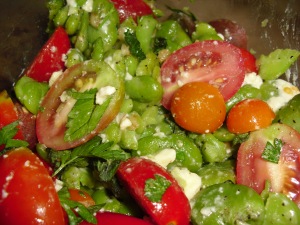 Vegans: Just omit the butter and add more olive oil. Instead of feta, you can used chopped raw cashew nuts.
Vegans: Just omit the butter and add more olive oil. Instead of feta, you can used chopped raw cashew nuts.
Common Myths About the Girl Scouts
The Girl Scouts just celebrated their 100th anniversary today on the National Mall. An estimated 200,000 girls participated in a day of friendship and commemoration of an organization that shaped the lives of millions of American girls. Yet the Girl Scouts have received a great deal of criticism over the past year from groups that took issue with the group’s politics and message. I was a Girl Scout for 12 years and despite being in my 20’s and not having any kids, I’ve been a troop leader for the past two. I’m fed up with all of the misinformation out there about the Girl Scouts. I’d be hard pressed to convince the girls in my troop that when they are busy using mobile apps, studying urban planning, and spelunking, that they’re a mere cookie peddling arm of another organization. I’m here to clear up some common misconceptions.
1. The Girl Scouts are the same organization as the Boy Scouts. While both organizations were founded at the same time, the two organizations have taken very different paths. The Girl Scouts are an inclusive organization who adapted their practices to include a all girls. Girl Scouts do not have to say the word God when reciting the honor or law and may opt out of saying grace. The Boy Scouts continue to emphasize God and the top three of the host/sponsor organizations associated with the Boy Scouts are Christian churches. Atheists and agnostics are not permitted to participate in the Boy Scouts of American (BSA). In 1991 the BSA openly stated that homosexuals would not be permitted to participate in scouting. While this was amended in 2004 to only exclude gay scouts from leadership positions, the atmosphere is far from welcoming. In contrast the Girl Scouts have no membership policies preventing GLBT individuals from joining and leading troops.
2. The Girl Scouts spend most of their time selling cookies. Most people associate the Girl Scouts with cookie sales. Selling cookies is not the primary activity of the Girl Scouts, it is merely the primary fundraising tool. In the DC area, a box of cookies costs $4 and roughly 70% of the cost of the box stays local and goes to the local council and troop. The national cookie program generates roughly $760 million dollars annually. Individual troops do not receive funding from Girl Scouts of the USA (GSUSA). All of the money for camping, community service, and other projects, comes from dues paid by parents and fundraising.
The Girl Scouts have done remarkably well in adopting technology to sell cookies. Girl Scout councils use social media and mobile apps to get cookies to customers and inform people of sales in the area. Selling cookies gives girls their first experience of business and marketing. The use of the internet in selling cookies gives girls a taste of current trends in technology. Additionally, the national office has done a good job in making the brand recognizable and extremely popular. By partnering with other companies to make cookie inspired lip gloss and candy bars, the national office has proven that it too, constantly innovates in fundraising.
3. The Girl Scouts emphasize traditionally feminine activities like cooking and sewing. Girl Scout badges represent mastery over a set of skills. We do still teach traditional life skills such as sewing and cooking but these are adapted to the times. Cooking badges emphasize healthy eating and nutrition, local food producers, and international cuisine. Sewing badges entail drafting patterns, using sewing machines, and recycling clothing. Far from being outdated, these skills enable girls to be participants in current discussions surrounding food, nutrition, recycling, and the do-it-yourself (DIY) movement.
Badges are now offered in skill sets including architecture, careers, environmentalism, computers, and automotive care. When my troop worked on the Money Sense badge, we talked about personal finance with a woman financial analyst at a federal agency. The activities each troop participates in is dependent on the interests of the girls and leaders, but on a national level, GSUSA promotes a wide range of activities.
4. The Girl Scouts are a radical organization. The Girl Scouts is radical but not in the way that detractors think. The Girl Scouts are radical in their inclusivity. Girl Scouts is one of the only national programs that accepts all girls, regardless of skill level, ability, and background. In November of last year, Bobby Montoya, a transgender scout, was turned down by a Colorado scout troop. The Girl Scouts of Colorado quickly released a statement saying that “If a child identifies as a girl and the child’s family presents her as a girl, Girl Scouts of Colorado welcomes her as a Girl Scout”.
In a world where there continues to be a significant pay gap between women and men, working women face a glass ceiling, and women continue to be underrepresented in corporate boardrooms and elected office, the Girl Scouts is a radical organization because it aims to change the status quo. By training generations of strong, independent women with leadership skills, the Girl Scouts refuses to accept that there is anything that its membership can’t do.
5. The Girl Scouts are no longer relevant. Though there are now more activities available to girls than there once were, Girl Scouts continues to fill an important role. GSUSA’s membership is currently 3.2 million. Scouting continues to offer opportunities to girls to be leaders and create change in their communities. Girl Scouts have the chance to expose themselves to a wide range of experiences. Girls in my troop, when camping for the first time, marveled at marveled at their first sight of the night sky in the Shenandoah mountains. Such encounters could come through other programs, but Girl Scouts offers the full package by combining them with the responsibility of community service, and empowerment programs designed to help girls do more than they had otherwise imagined.
According to GSUSA, more than 59 million American women enjoyed Girl Scouting in their youth. 59% of women in the Senate are former Girl Scouts, 60% of women in the House of Representatives are former Girl Scouts, and 53% of all women business owners are former Girl Scouts. Over 20 of NASA’s career astronauts were Girl Scout alumnae. Girl Scouts have reached the highest ranks of the military and served on the Supreme Court. The Girl Scout program continues to profoundly affect the lives of women and girls and it has shown it can keep adapting to the changing needs of American girls.
Basic Yellow Dal
Sometimes I’m in the mood for some simple Indian comfort food. Yellow dal is just spiced yellow lentils that you can eat with rice or bread. Add a little salad made of chopped tomato, cucumber, and onion in lime juice and you have a meal. I like to serve this with a spoonful of spicy Indian pickle from a jar. Easy, comforting, and super healthy. You can add a spoonful of butter or oil to make the dish richer. Recipe adapted from Bittman’s “How to Cook Everything Vegetarian”.
1 cup yellow lentils
1 onion
3 tbs ginger-garlic paste
4 cardamom pods
1 tbs mustard seeds
2 cloves
1 tbs cooking oil
salt and black pepper
2 dried chilies or 1 fresh chili
fresh cilantro
Step 1: Slice the onion and fry in a spoonful of oil in the saucepan until the onion softens.
Step 2: Combine all of the ingredients (except for cilantro) in a small saucepan so that the water level is one -two inches above the lentils. Cook on simmer for 30 -60 min until lentils are desired consistency. Some people like the dal to retain its shape, others prefer to cook it until its soupy.
Step 3: Add in the butter or oil (if desired) and garnish with a handful of freshly chopped cilantro. Remove the cardamom and cloves from the top of the mixture (they should float to the top).





